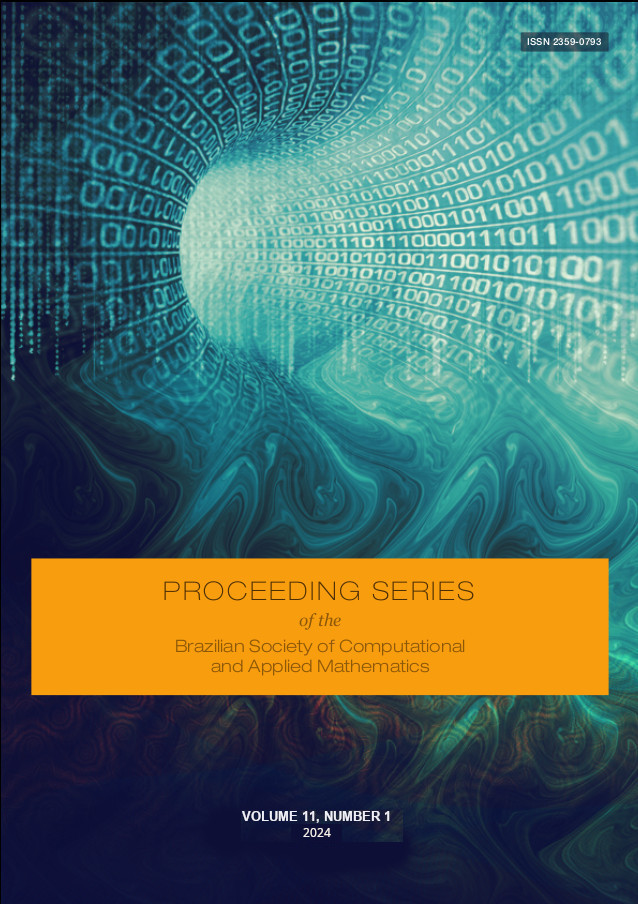Computational Assessment of Spike Protein Diversity in SARS-CoV-2 Lineages
DOI:
https://doi.org/10.5540/03.2025.011.01.0365Keywords:
Phylogenetics, Bioinformatic, VirologyAbstract
In December 2019, a new beta-coronavirus was identified in Wuhan, China. The new Severe Acute Respiratory Syndrome Coronavirus 2 (SARS-CoV-2) led to a global pandemic due to rapid human transmission. The disease causes severe respiratory illness that can manifest as a mild cold or total respiratory commitment, often leading to death in severe cases. In this study, 153 SARS-CoV-2 samples were selected from 43 countries and analyzed. We aimed to perform a phylogenetic analysis of the Spike protein of SARS-CoV-2 to identify the mutations and their occurrence. This work aimed to perform a comparative analysis of the evolution of the Spike protein and the major events that affected it. A Maximum likelihood tree was inferred using the software RAXML-NG. The confidence in the inferred tree topology was performed through bootstrap replicates and branch support was calculated with the Transfer index. Each clade was grouped by a clear set of mutations, some mutations were presented in multiple lineages. The lineage that presented the most original set of substitution was BA.1. An evident change was observed when the substitution profile of the lineages was observed. The ability to reconstruct the functional evolution of proteins and stipulate probable evolutionary paths allows for a better understanding of our universe and a greater preparation for future challenges.
Downloads
References
T. Xiaolu et al. “On the origin and continuing evolution of SARS-CoV-2”. In: National Science Review 7.6 (Mar. 2020), pp. 1012–1023. issn: 2095-5138. doi: 10.1093/nsr/nwaa036.
S. Zheng-Li C. Jie L. Fang. “Origin and evolution of pathogenic coronaviruses”. In: Nature Reviews Microbiology 17.3 (Mar. 2019), pp. 181–192. issn: 1740-1534. doi: 10.1038/s41579-018-0118-9.
W. Chen et al. “A novel coronavirus outbreak of global health concern”. In: The Lancet 395 (Jan. 2020). doi: 10.1016/S0140-6736(20)30185-9.
P. Leo et al. “Identification of a Novel Coronavirus in Bats”. In: Journal of virology 79 (Feb. 2005), pp. 2001–9. doi: 10.1128/JVI.79.4.2001-2009.2005.
Z. Na et al. “A Novel Coronavirus from Patients with Pneumonia in China, 2019”. In: New England Journal of Medicine 382 (Jan. 2020). doi: 10.1056/NEJMoa2001017.
N. Vinod. “Exploring COVID-19: Relating the Spike Protein to Infectivity, Pathogenicity, and Immunogenicity”. In: (Jan. 2021). doi: 10.13140/RG.2.2.23346.22725.
L. Jun et al. “Structure of the SARS-CoV-2 spike receptor-binding domain bound to the ACE2 receptor”. In: Nature 581.7807 (May 2020), pp. 215–220. issn: 1476-4687. doi: 10.1038/s41586-020-2180-5.
S. Shuo et al. “Epidemiology, Genetic Recombination, and Pathogenesis of Coronaviruses”. In: Trends in Microbiology 24 (Mar. 2016). doi: 10.1016/j.tim.2016.03.003.
L. Xiang et al. “Bat origin of a new human coronavirus: there and back again”. In: Science China Life Sciences 63 (Feb. 2020). doi: 10.1007/s11427-020-1645-7.
W. Fan et al. “A new coronavirus associated with human respiratory disease in China”. In: Nature 579 (Mar. 2020), pp. 1–8. doi: 10.1038/s41586-020-2008-3.
Z. Ali et al. “Isolation of a novel coronavirus from a man with pneumonia in Saudi Arabia”. In: The New England journal of medicine 367.19 (Nov. 2012), pp. 1814–1820. issn: 0028-4793. doi: 10.1056/nejmoa1211721.
S. Sairaj and N. Madhavan. “Structural Proteins in Severe Acute Respiratory Syndrome Coronavirus-2”. In: Archives of Medical Research 51 (May 2020). doi: 10.1016/j.arcmed.2020.05.012.
P. S. Masters. The Molecular Biology of Coronaviruses. Vol. 66. Advances in Virus Research. Academic Press, 2006, pp. 193–292. doi: https://doi.org/10.1016/S0065-3527(06)66005-3.
R. John et al. “MAFFT-DASH: integrated protein sequence and structural alignment”. In: Nucleic Acids Research 47.W1 (May 2019), W5–W10. issn: 0305-1048. doi: 10.1093/nar/gkz342.
E. B. Katherine T. Charlotte F. Andrew. “CIAlign: A highly customisable command line tool to clean, interpret and visualise multiple sequence alignments”. en. In: PeerJ 10 (May 2022).
P. David. “jModelTest: Phylogenetic Model Averaging”. In: Molecular Biology and Evolution 25.7 (Apr. 2008), pp. 1253–1256. issn: 0737-4038. doi: 10.1093/molbev/msn083.
K. Alexey et al. “RAxML-NG: a fast, scalable and user-friendly tool for maximum likelihood phylogenetic inference”. In: Bioinformatics 35.21 (May 2019), pp. 4453–4455. issn: 1367-4803. doi: 10.1093/bioinformatics/btz305.
B. Peer L. Ivica. “Interactive Tree Of Life (iTOL) v5: an online tool for phylogenetic tree display and annotation”. In: Nucleic Acids Research 49.W1 (Apr. 2021), W293–W296. issn: 0305-1048. doi: 10.1093/nar/gkab301.
S. W. Tuck et al. “The N-terminal domain of spike glycoprotein mediates SARS-CoV-2 infection by associating with L-SIGN and DC-SIGN”. In: (Nov. 2020). doi: 10.1101/2020.11.05.369264.

